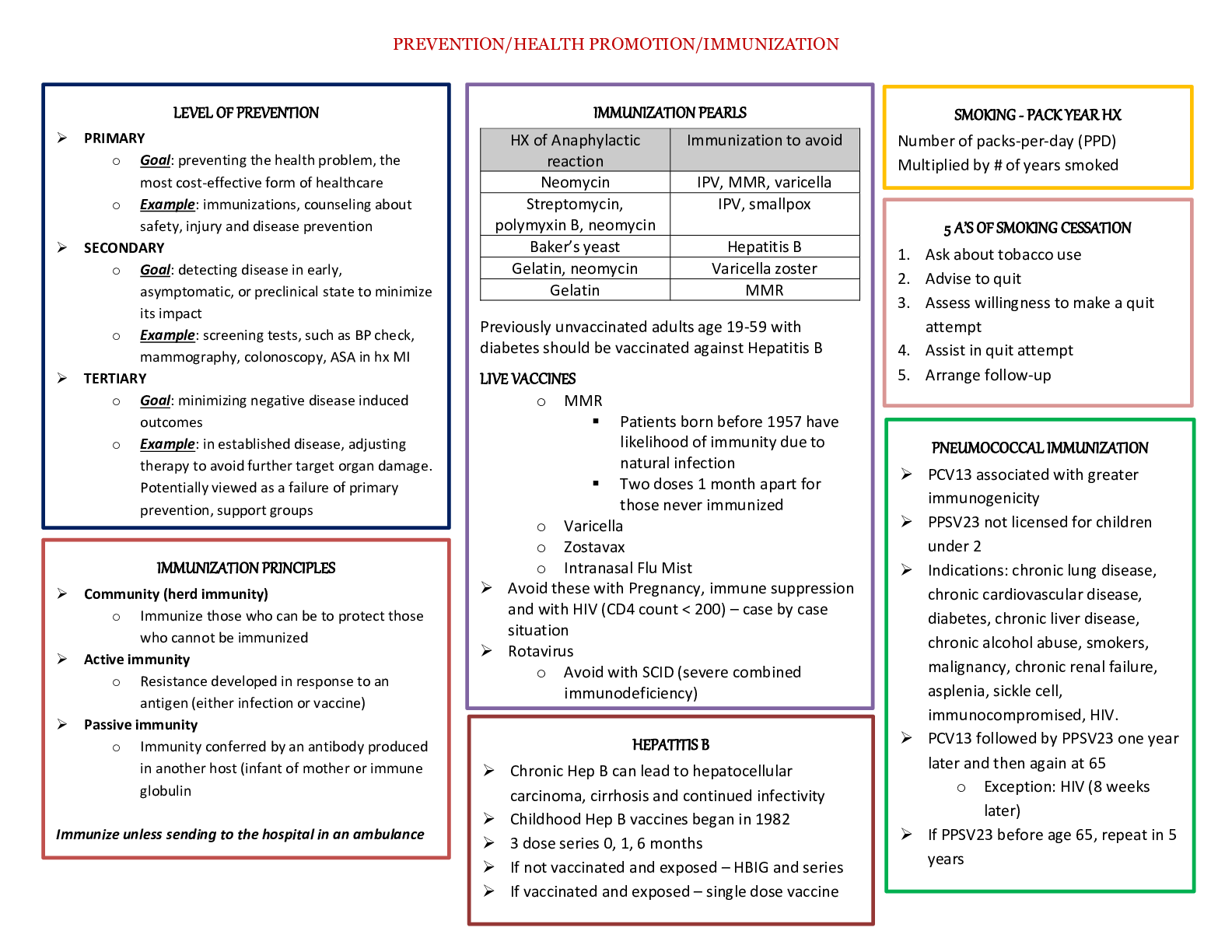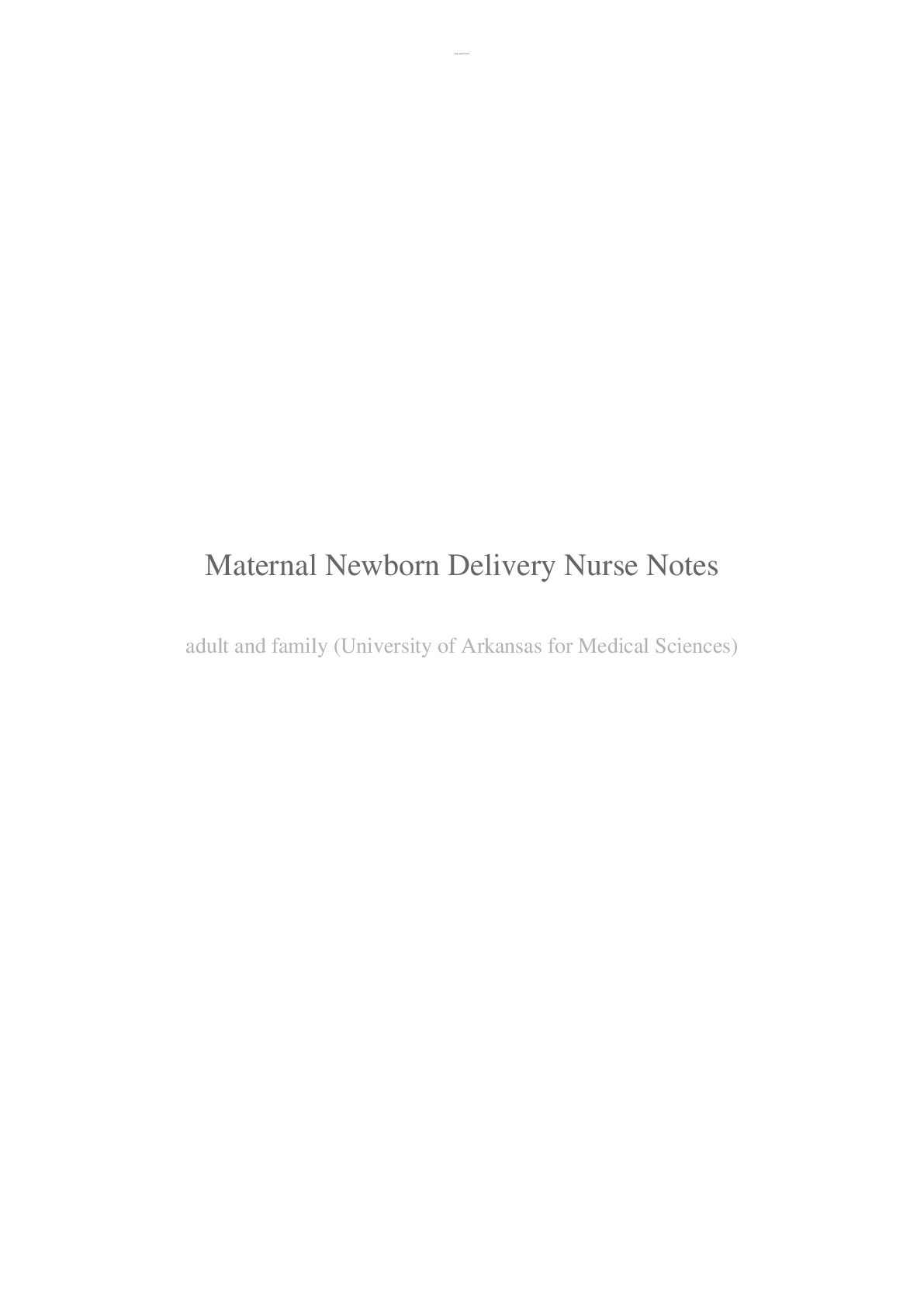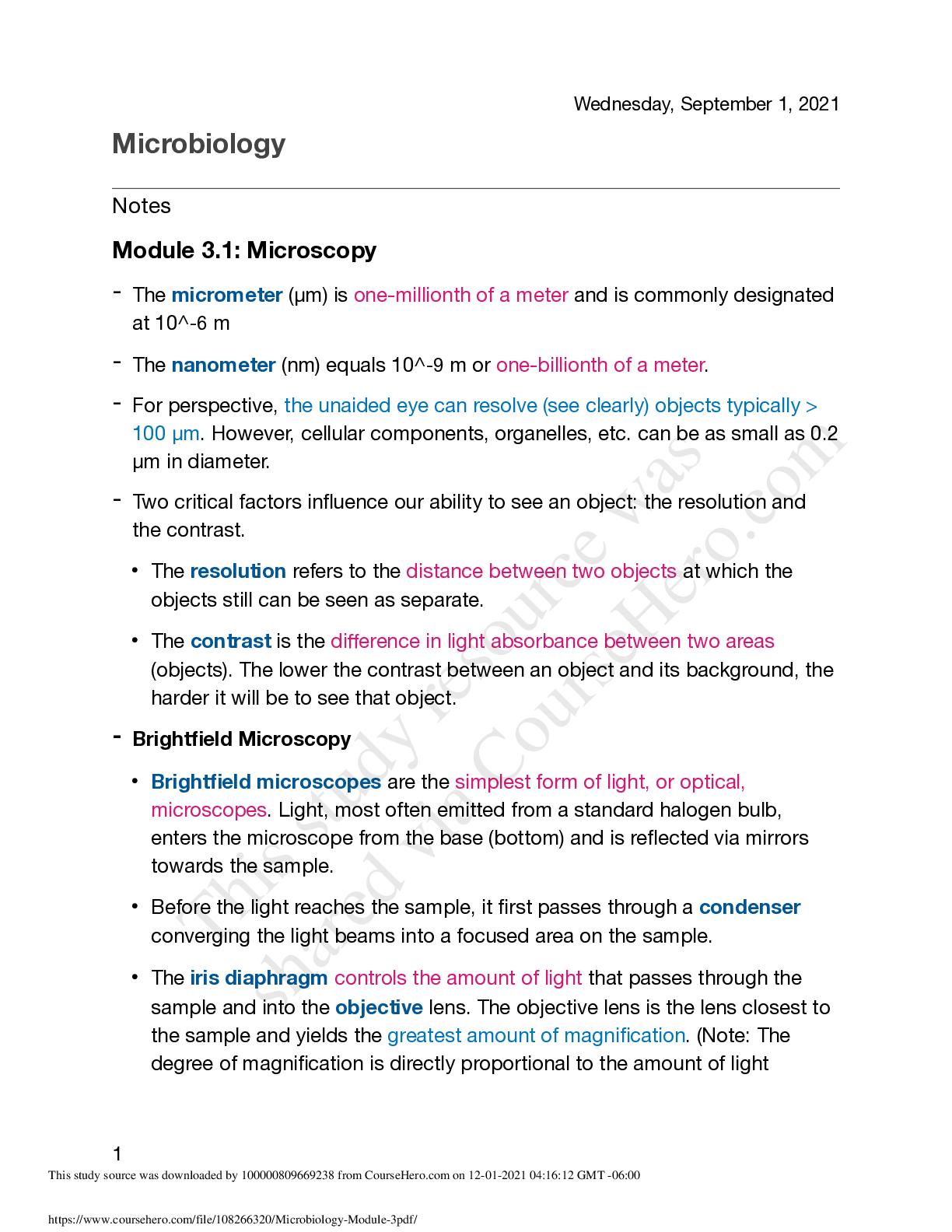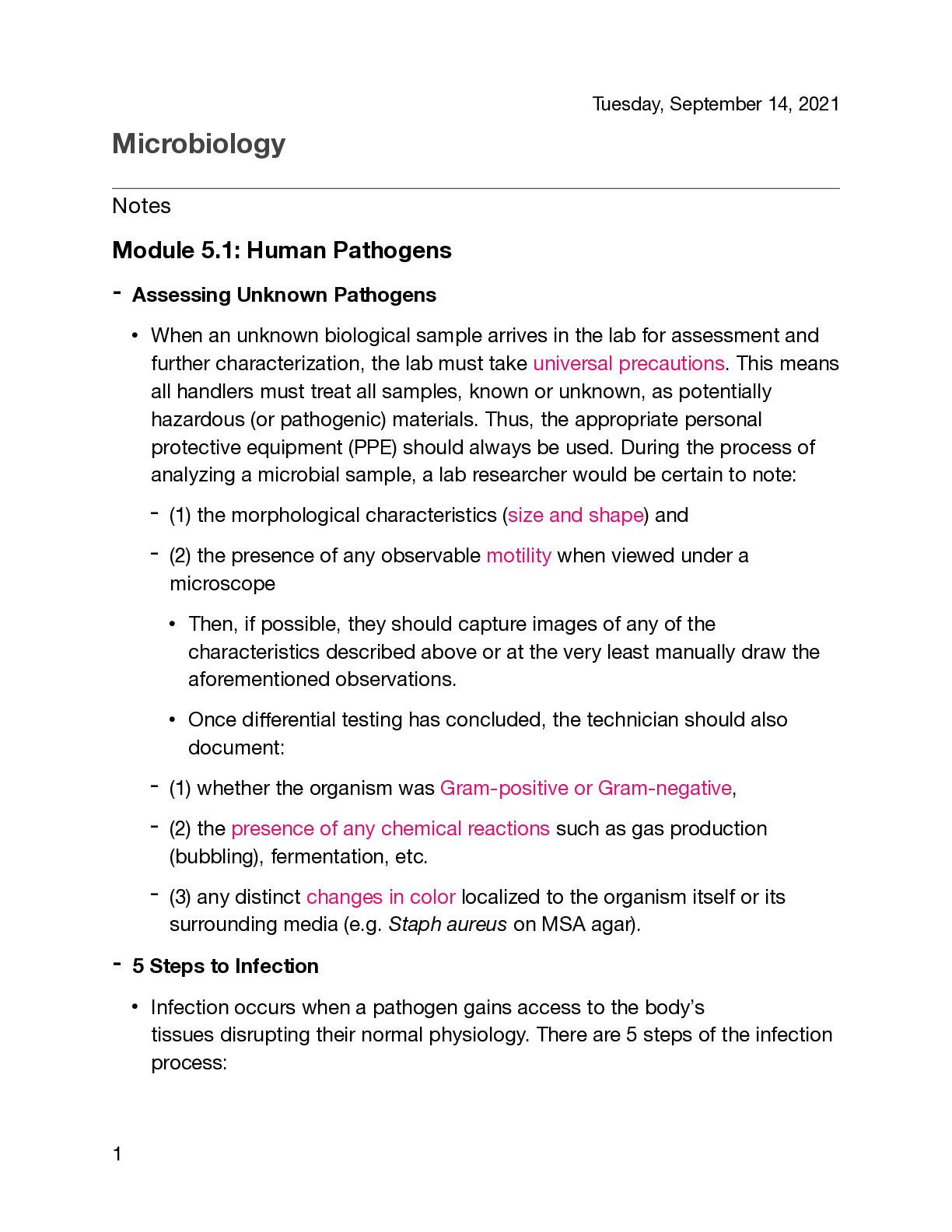Biology > STUDY GUIDE > BIO 171 Microbiology Module 2. Portage Learning (All)
BIO 171 Microbiology Module 2. Portage Learning
Document Content and Description Below
Module 2.1: Metabolism - Enzymes • Most metabolic functions in cells rely on enzymes to facilitate the biochemical reactions. An enzyme is a protein, or group of proteins, that catalyze (speed u... p) chemical reactions. The enzyme is not consumed during the reaction and can be used repeatedly by the cell. The specificity and function of some enzymes can also be regulated by a cofactor—a small chemical component, usually metal ions, that assist enzymes during the catalysis reactions. Thus, cofactors serve as regulators of chemical reactions: In the absence of the proper cofactor, enzymes are inactive, while in its presence enzymes are active. • In order to produce sufficient levels of energy, microorganisms must break down complex nutrients into smaller, manageable (and useful) subunits. Enzymes must break down proteins, lipids, and polysaccharides into their smaller building-block molecules: proteins into amino acids, fats into glycerol/fatty acids, and polysaccharides into monosaccharides. In turn, cells must also be able assemble or build the cellular components required for survival. Most metabolic processes can be classified as either catabolism or anabolism. • Catabolism is the process of breaking down larger molecules into useful energy sources. • Anabolism is the building up or biosynthesis of macromolecules (see Module 1) from smaller molecular units into larger complexes. • For instance, the anabolic process is often used during growth and repair phases of the cell. The above processes require a great deal of energy in order to carry out the required reactions for life. Without enzymes and their ability to increase the rate of a specific chemical reaction, these reactions 1 Thursday, August 12, 2021 would take too long and exhaust too much energy. If a cell runs out of energy before the necessary reactions conclude, it dies. - Adenosine Triphosphate (ATP) • The most widely used form of energy in the cells is adenosine triphosphate, or ATP. If a phosphate group is removed from ATP, it becomes adenosine diphosphate, or ADP. ATP has energy to donate, while ADP can accept energy (phosphate group) to become ATP. By donating available phosphate groups, ATP transfers energy from catabolic (breaking down) reactions to be used for anabolism (building up). This process of donating and/or accepting energy is what fuels a cell to carry out the necessary biochemical reactions for survival. • How microbes produce ATP, specifically the starting source of electrons, can also be used as a means to further differentiate and characterize microorganisms. - Phototrophs acquire energy from photons of light to generate ATP from ADP [Show More]
Last updated: 1 year ago
Preview 1 out of 10 pages
Instant download

Buy this document to get the full access instantly
Instant Download Access after purchase
Add to cartInstant download
Reviews( 0 )
Document information
Connected school, study & course
About the document
Uploaded On
Dec 01, 2021
Number of pages
10
Written in
Additional information
This document has been written for:
Uploaded
Dec 01, 2021
Downloads
0
Views
107













